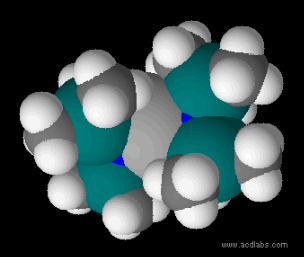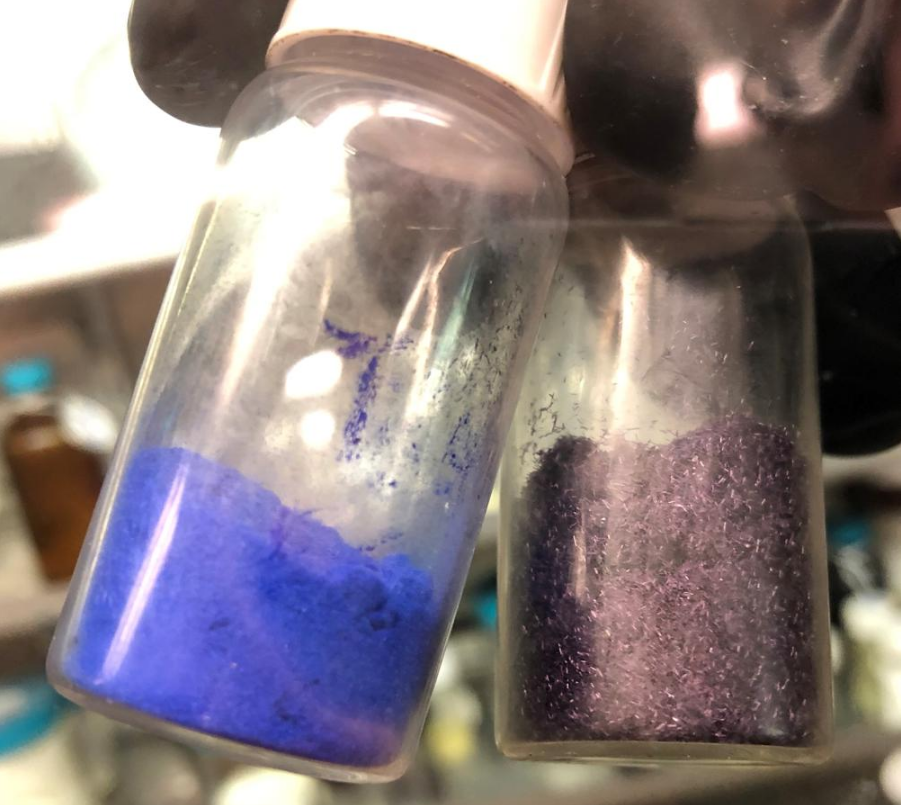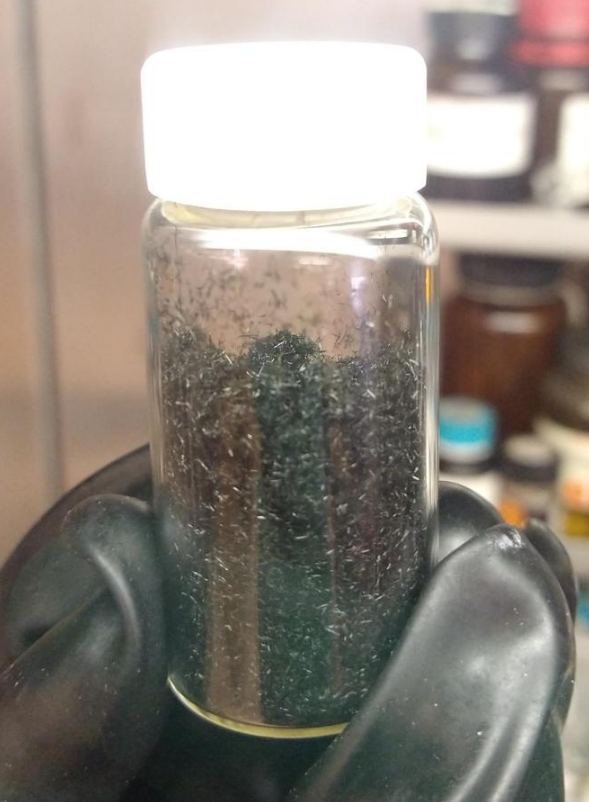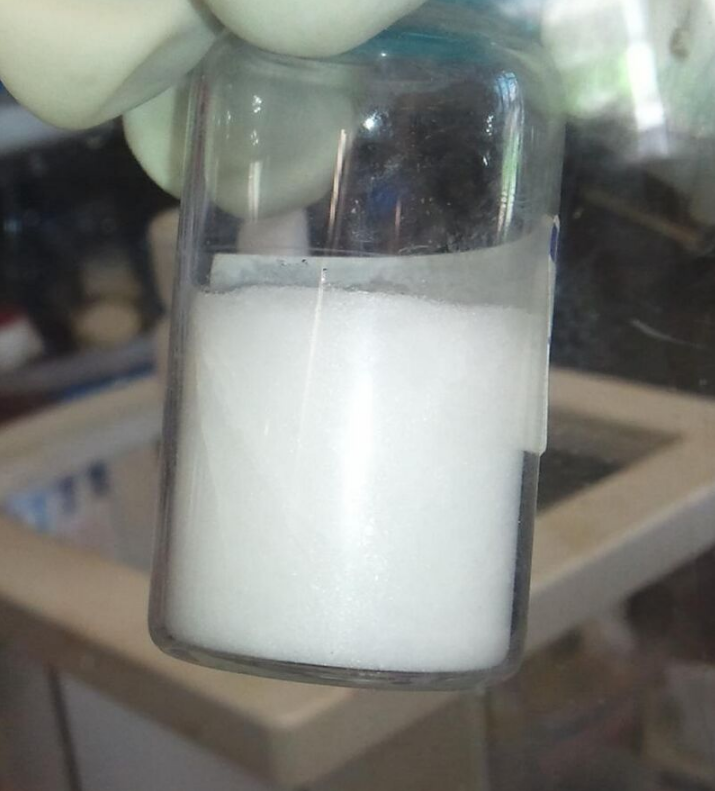
Video Upload Options
Metal bis(trimethylsilyl)amides (often abbreviated as metal silylamides) are coordination complexes composed of a cationic metal with anionic bis(trimethylsilyl)amide ligands and are part of a broader category of metal amides. Due to the bulky hydrocarbon backbone metal bis(trimethylsilyl)amide complexes have low lattice energies and are lipophilic . For this reason, they are soluble in a range of nonpolar organic solvents, in contrast to simple metal halides, which only dissolve in reactive solvents. These steric bulky complexes are molecular, consisting of mono-, di-, and tetramers. Having a built-in base, these compounds conveniently react with even weakly protic reagents. The class of ligands and pioneering studies on their coordination compounds were described by Bürger and Wannagat. The ligands are often denoted hmds (e.g. M(N(SiMe3)2)3 = M(hmds)3) in reference to the hexamethyldisilazane from which they are prepared.
1. General Methods of Preparation
Apart from group 1 and 2 complexes, a general method for preparing metal bis(trimethylsilyl)amides entails reactions of anhydrous metal chloride[1] with an alkali metal bis(trimethylsilyl)amides via a salt metathesis reaction:
- MCln + n Na(hmds) → M(hmds)n + n NaCl
Alkali metal chloride formed as a by-product typically precipitates as a solid, allowing for its removal by filtration. The remaining metal bis(trimethylsilyl)amide is then often purified by distillation or sublimation.

2. Group 1 Complexes
Lithium, sodium, and potassium bis(trimethylsilyl)amides are commercially available. When free of solvent, the lithium[2] and sodium[3] complexes are trimeric, and the potassium complex is dimeric in solid state.[4] The lithium reagent may be prepared from n-butyllithium and bis(trimethylsilyl)amine:[5]
- nBuLi + HN(SiMe3)2 → Li(hmds) + butane
The direct reaction of these molten metals with bis(trimethylsilyl)amine at high temperature has also been described:[6]
- M + HN(SiMe3)2 → MN(SiMe3)2 + 1/2 H2
Alkali metal silylamides are soluble in a range of organic solvents, where they exist as aggregates, and are commonly used in organic chemistry as strong sterically hindered bases. They are also extensively used as precursors for the synthesis other bis(trimethylsilyl)amide complexes (see below).
3. Group 2 Complexes
The calcium and barium complexes may be prepared via the general method, by treating calcium iodide or barium chloride with potassium or sodium bis(trimethylsilyl)amide.[7][8] However, this method can result in potassium contamination. An improved synthesis involving the reaction of benzylpotassium with calcium iodide, followed by reaction with bis(trimethylsilyl)amine results in potassium-free material:[9]
- 2 BnK + CaI2 + THF → Bn2Ca(thf) + KI
- Bn2Ca(thf) + 2 HN(SiMe3)2 → Ca(hmds)2 + 2 C6H5CH3 + THF
Magnesium silylamides can be prepared from dibutylmagnesium; which is commercially available as a mixture of n-Bu and s-Bu isomers. It deprotonates the free amine to yield the magnesium bis(trimethylsilyl)amide, itself commercially available.[10]
- Bu2Mg + 2 HN(SiMe3)2 → Mg(hmds)2 + 2 butane
In contrast to group 1 metals, the amine N-H in bis(trimethylsilyl)amine is not acidic enough to react with the group 2 metals, however complexes may be prepared via a reaction of tin(II) bis(trimethylsilyl)amide with the appropriate metal:
- M + 2 HN(SiMe3)2 ↛ M(hmds)2 + H2 (M = Mg, Ca, Sr, Ba)
- M + Sn(hmds)2 → M(hmds)2 + Sn
Long reaction times are required for this synthesis and when performed in the presence of coordinating solvents, such as dimethoxyethane, adducts are formed. Hence non-coordinating solvents such as benzene or toluene must be used to obtain the free complexes.[11]
4. P-Block Complexes
Tin(II) bis(trimethylsilyl)amide is prepared from anhydrous tin(II) chloride[12] and is commercially available. It is used to prepare other metal bis(trimethylsilylamide)s via transmetallation. The group 13[13] and bismuth(III) bis(trimethylsilyl)amides[14] are prepared in the same manner; the aluminium complex may also be prepared by treating strongly basic lithium aluminium hydride with the parent amine:[13]
- LiAlH4 + 4 HN(SiMe3)2 → Li(hmds) + Al(hmds)3 + 4 H2
An alternative synthesis of tetrasulfur tetranitride entails the use of a metal bis(trimethylsilyl)amide [(Me3Si)2N]2S as a precursor with pre-formed S–N bonds. [(Me3Si)2N]2S is prepared by the reaction of lithium bis(trimethylsilyl)amide and sulfur dichloride (SCl2).
- 2 [(CH3)3Si]2NLi + SCl2 → [((CH3)3Si)2N]2S + 2 LiCl
The metal bis(trimethylsilyl)amide [((CH3)3Si)2N]2S reacts with the combination of SCl2 and sulfuryl chloride (SO2Cl2) to form S4N4, trimethylsilyl chloride, and sulfur dioxide:[15]
- 2[((CH3)3Si)2N]2S + 2SCl2 + 2SO2Cl2 → S4N4 + 8 (CH3)3SiCl + 2SO2
Tetraselenium tetranitride, Se4N4, is a compound analogous to tetrasulfur tetranitride and can be synthesized by the reaction of selenium tetrachloride with [((CH3)3Si)2N]2Se. The latter compound is a metal bis(trimethylsilyl)amide and can be synthesized by the reaction of selenium tetrachloride (SeCl4), selenium monochloride (Se2Cl2) and lithium bis(trimethylsilyl)amide.[16]
5. D-Block Complexes
Frozen zinc bis(trimethylsilyl)amide. This compound melts at 12.5 °C. https://handwiki.org/wiki/index.php?curid=1922518

In line with the general method, bis(trimethylsilyl)amides of transition metals are prepared by a reaction between the metal halides (typically chlorides) and sodium bis(trimethylsilyl)amide,[17] some variation does exist however, for instance the synthesis of blue Ti(N(SiMe3)2)3 using the soluble precursor TiCl3(Et3N)3.[18] The melting and boiling points of the complexes decrease across the series, with Group 12 metals being sufficiently volatile to allow purification by distillation.[19]
Iron complexes are notable for having been isolated in both the ferrous (II) and ferric (III) oxidation states. Fe[N(SiMe3)2]3 can be prepared by treating iron trichloride with lithium bis(trimethylsilyl)amide[20] and is paramagnetic as the high spin iron(III) contains 5 unpaired electrons.
- FeCl3 + 3LiN(SiMe3)2 → Fe[N(SiMe3)2]3 + 3LiCl
Similarly, the two coordinate Fe[N(SiMe3)2]2 complex is prepared by treating iron dichloride with lithium bis(trimethylsilyl)amide:[21]
- FeCl2 + 2LiN(SiMe3)2 → Fe[N(SiMe3)2]2 + 2LiCl

The dark green Fe[N(SiMe3)2]2 complex exists in two forms depending on its physical state. At room temperature the compound is a monomeric liquid with two-coordinate Fe centers possessing S4 symmetry,[22] in the solid state it forms a dimer with trigonal planar iron centers and bridging amido groups.[23] The low coordination number of the iron complex is largely due to the steric effects of the bulky bis(trimethylsilyl)amide, however the complex will bind THF to give the adduct, {(THF)Fe[N(SiMe3)2]2}.[24] Similar behavior can be seen in Mn(hmds)2 and Co(hmds)2, which are monomeric in the gas phase[22] and dimeric in the crystalline phase.[25][26] Group 11 complexes are especially prone to oligomerization, forming tetramers in the solid phase.[27][28][29] The Lewis acid properties of the group 12 complexes have been reported[30] and the improved E and C numbers for the Zn and Cd complexes are listed in the ECW model.
| Compound | Appearance | m.p. (°C) | b.p. (°C) | Spin | Comment |
|---|---|---|---|---|---|
| Group 3 complexes | |||||
| Sc(hmds)3[31] | Colorless solid | 172-174 | S = 0 | ||
| Y(hmds)3 | White solid | 180-184 | 105 °C/10 mmHg (subl.) | S = 0 | Commercially available |
| Group 4 complexes | |||||
| Ti(hmds)3[31] | Bright blue solid | S = 1/2 | Prepared from TiCl3(N(CH3)3)2 | ||
| Group 5 complexes | |||||
| V(hmds)3[32] | Dark violet solid | 174-176 | S = 1 | Prepared from VCl3(N(CH3)3)2 | |
| Group 6 complexes | |||||
| Cr(hmds)3[17][31] | Apple-green solid | 120 | 110 / 0.5 mmHg (subl.) | S = 3/2 | |
| Group 7 complexes | |||||
| Mn(hmds)2[17][22] | Beige solid | 100 / 0.2 mmHg | S = 5/2 | ||
| Mn(hmds)3[33] | Violet solid | 108-110 | S = 2 | ||
| Group 8 complexes | |||||
| Fe(hmds)2[34] | Light green solid | 90-100 / 0.01 mmHg | |||
| Fe(hmds)3[31] | Dark green solid | 120 / 0.5 mmHg (subl.) | S = 5/2 | ||
| Group 9 complexes | |||||
| Co(hmds)[35] | Black Solid | Tetrameric in the solid state | |||
| Co(hmds)2[36] | Green solid | 73 | 101 / 0.6 mmHg | ||
| Co(hmds)3[33] | Dark olive green solid | 86-88 | S = 2 | ||
| Group 10 complexes | |||||
| Ni(hmds)[37] | Black solid | >250 | Tetrameric in the solid state | ||
| Ni(hmds)2[17] | Red liquid | 80 / 0.2 mmHg | |||
| Group 11 complexes | |||||
| Cu(hmds)[17] | Colorless solid | 180 / 0.2 mmHg (subl.) | S = 0 | ||
| Ag(hmds)[28] | Colorless solid | S = 0 | Insoluble in hydrocarbons and diethyl ether | ||
| Au(hmds)[29] | Colorless solid | S = 0 | |||
| Group 12 complexes | |||||
| Zn(hmds)2[19] | Colorless liquid | 12.5 | 82 / 0.5 mmHg | S = 0 | Commercially available |
| Cd(hmds)2[19] | Colorless liquid | 8 | 93 / 0.5 mmHg | S = 0 | |
| Hg(hmds)2[19] | Colorless liquid | 11 | 78 / 0.15 mmHg | S = 0 | |
6. F-Block Complexes
Lanthanide triflates can be convenient anhydrous precursors to many bis(trimethylsilyl)amides:[38]
- Ln(OTf)3 + 3 M(hmds) → Ln(hmds)3 + 3 MOTf (M = Li, Na, K; Ln = La, Nd, Sm, Er)
However it is more common to see the preparation of lanthanide bis(trimethylsilyl)amides from anhydrous lanthanide chlorides,[39] as these are cheaper. The reaction is performed in THF and requires a period at reflux. Once formed, the product is separated from LiCl by exchanging the solvent for toluene, in which Ln(hmds)3 is soluble but LiCl is not.
- Ln(Cl)3 + 3 HMDS + 3 nBuLi → Ln(hmds)3 + 3 LiCl + 3 butane (Ln = La, Ce, Pr, Nd, Sm, Eu, Gd, Ho, Yb, and Lu)
Silylamides are important as starting materials in lanthanide chemistry, as lanthanide chlorides have either poor solubility or poor stability in common solvents. As a result of this nearly all lanthanide silylamides are commercially available.
| Compound | Appearance | m.p. (°C) | Comment |
|---|---|---|---|
| La(hmds)3 | White | 145-149 | |
| Ce(hmds)3 | Yellow-brown | 132-140 | |
| Pr(hmds)3 | Pale green | 155-158 | |
| Nd(hmds)3 | Pale blue | 161-164 | |
| Sm(hmds)3 | Pale yellow | 155-158 | |
| Eu(hmds)3 | Orange | 159-162 | |
| Gd(hmds)3 | White | 160-163 | |
| Dy(hmds)3[40] | Pale green | 157–160 | |
| Ho(hmds)3 | Cream | 161-164 | |
| Yb(hmds)3 | Yellow | 162-165 | |
| Lu(hmds)3 | White | 167-170 |
There has also been some success in the synthesis and characterization of actinide bis(trimethylsilyl)amides.[41][42] A convenient synthetic route uses the THF-adducts of the iodide salts AnI3(THF)4 as starting materials.
| Compound | Appearance | m.p. (°C) | Comment |
|---|---|---|---|
| U(hmds)3 | Red-purple | 137–140 | Sublimates at 80–100 °C (ca. 10−3 torr) |
| Np(hmds)3 | Blue-black | Sublimates at 60 °C (ca. 10−4 torr) | |
| Pu(hmds)3 | Yellow-orange | Sublimates at 60 °C (ca. 10−4 torr) |
7. Safety
Metal bis(trimethylsilyl)amides are strong bases. They are corrosive, and are incompatible with many chlorinated solvents. These compounds react vigorously with water, and should be manipulated with air-free technique.
References
- Many metal chlorides may be dried by refluxing in thionyl chloride. See Alfred R. Pray; Richard F. Heitmiller; Stanley Strycker (1990). "Anhydrous Metal Chlorides". Inorganic Syntheses. Inorg. Synth.. 28. pp. 321–323. doi:10.1002/9780470132593.ch80. ISBN 978-0-470-13259-3. https://dx.doi.org/10.1002%2F9780470132593.ch80
- Mootz, D.; Zinnius, A.; Böttcher, B. (1969). "Assoziation im festen Zustand von Bis(trimethylsilyl)amidolithium und Methyltrimethylsilanolatoberyllium". Angew. Chem. 81 (10): 398–399. doi:10.1002/ange.19690811015. https://dx.doi.org/10.1002%2Fange.19690811015
- Driess, Matthias; Pritzkow, Hans; Skipinski, Markus; Winkler, Uwe (1997). "Synthesis and Solid State Structures of Sterically Congested Sodium and Cesium Silyl(fluorosilyl)phosphanide Aggregates and Structural Characterization of the Trimeric Sodium Bis(trimethylsilyl)amide". Organometallics 16 (23): 5108–5112. doi:10.1021/om970444c. https://dx.doi.org/10.1021%2Fom970444c
- Tesh, Kris F.; Hanusa, Timothy P.; Huffman, John C. (1990). "Ion pairing in [bis(trimethylsilyl)amido]potassium: The x-ray crystal structure of unsolvated [KN(SiMe3)2]2". Inorg. Chem. 29 (8): 1584–1586. doi:10.1021/ic00333a029. https://dx.doi.org/10.1021%2Fic00333a029
- Amonoo-Neizer, E. H.; Shaw, R. A.; Skovlin, D. O.; Smith, B. C.; Rosenthal, Joel W.; Jolly, William L. (1966). Lithium Bis(Trimethylsilyl)Amide and Tris(Trimethylsilyl)Amine. Inorganic Syntheses. 8. 19–22. doi:10.1002/9780470132395.ch6. ISBN 978-0-470-13239-5. https://dx.doi.org/10.1002%2F9780470132395.ch6
- US patent 5420322 http://v3.espacenet.com/textdoc?DB=EPODOC&IDX=US5420322
- Boncella, J. M.; Coston, C. J.; Cammack, J. K. (1991). "The synthesis of bis(hexamethyldisilylamido)barium(II)". Polyhedron 10 (7): 769–770. doi:10.1016/s0277-5387(00)83767-5. https://dx.doi.org/10.1016%2Fs0277-5387%2800%2983767-5
- Tanner, P. S.; Burkey, D. J.; Hanusa, T. P. (1995). "Cyclopentadienyl ring metathesis with bis(pentamethylcyclopentadienyl)calcium as a route to mixed ring organolanthanide complexes; the crystal structure of (C5Me5)2Nd(C5H5)". Polyhedron 14 (2): 331–333. doi:10.1016/0277-5387(94)00316-7. https://dx.doi.org/10.1016%2F0277-5387%2894%2900316-7
- Johns, Adam M.; Chmely, Stephen C.; Hanusa, Timothy P. (2009). "Solution Interaction of Potassium and Calcium Bis(trimethylsilyl)amides; Preparation of Ca[N(SiMe3)2]2from Dibenzylcalcium". Inorg. Chem. 48 (4): 1380–1384. doi:10.1021/ic8012766. PMID 19138130. https://dx.doi.org/10.1021%2Fic8012766
- LM Engelhardt; BS Jolly; PC Junk; CL Raston; BW Skelton; AH White (1986). "Highly Hindered Amido-Lithium and Amido-Magnesium Complexes. Crystal-Structures of [Li(μ-N(SiMe3)2)(Tetrahydrofuran)]2 and [MgBus(μ-N(SiMe3)2)]2". Aust. J. Chem. 39 (9): 1337. doi:10.1071/CH9861337. https://dx.doi.org/10.1071%2FCH9861337
- Westerhausen, Matthias. (1991). "Synthesis and spectroscopic properties of bis(trimethylsilyl)amides of the alkaline-earth metals magnesium, calcium, strontium, and barium". Inorg. Chem. 30: 96–101. doi:10.1021/ic00001a018. https://dx.doi.org/10.1021%2Fic00001a018
- Schaeffer, Charles D.; Myers, Lori K.; Coley, Suzanne M.; Otter, Julie C.; Yoder, Claude H. (1990). "Preparation, analysis, and reactivity of bis[N,N-bis(trimethylsilyl)amino]tin(II): An advanced undergraduate laboratory project in organometallic synthesis". J. Chem. Educ. 67 (4): 347. doi:10.1021/ed067p347. Bibcode: 1990JChEd..67..347S. https://dx.doi.org/10.1021%2Fed067p347
- Bürger, H; Cichon, J; Goetze, U; Wannagat, U; Wismar, H.J (1971). "Beiträgezur chemie der silicium-stickstoff-verbindungen CVII. Darstellung, schwingungsspektren und normalkoordinatenanalyse von disilylamiden der 3. Gruppe: M[N(SiMe3)2]3 mit M = Al, Ga und In". J. Organomet. Chem. 33: 1–12. doi:10.1016/s0022-328x(00)80797-4. https://dx.doi.org/10.1016%2Fs0022-328x%2800%2980797-4
- Vehkamäki, Marko; Hatanpää, Timo; Ritala, Mikko; Leskelä, Markku (2004). "Bismuth precursors for atomic layer deposition of bismuth-containing oxide films". Journal of Materials Chemistry 14 (21): 3191. doi:10.1039/b405891g. https://dx.doi.org/10.1039%2Fb405891g
- Maaninen, A.; Shvari, J.; Laitinen, R. S.; Chivers, T (2002). Coucouvanis, Dimitri. ed. Compounds of General Interest. 33. New York: John Wiley & Sons, Inc.. 196–199. doi:10.1002/0471224502.ch4. ISBN 9780471208259. https://dx.doi.org/10.1002%2F0471224502.ch4
- Siivari, Jari; Chivers, Tristram; Laitinen, Risto S. (1993). "A simple, efficient synthesis of tetraselenium tetranitride". Inorganic Chemistry 32 (8): 1519–1520. doi:10.1021/ic00060a031. https://dx.doi.org/10.1021%2Fic00060a031
- H. Bürger; U. Wannagat (1963). "Silylamido-Derivate von Chrom, Mangan, Nickel und Kupfer". Monatshefte für Chemie 95 (4–5): 1099–1102. doi:10.1007/BF00904702. https://dx.doi.org/10.1007%2FBF00904702
- Bradley, Donald C.; Copperthwaite, Richard G.; Extine, M. W.; Reichert, W. W.; Chisholm, Malcolm H. (1978). "Transition Metal Complexes of Bis(Trimethyl-silyl)Amine (1,1,1,3,3,3-Hexamethyldisilazane)". Inorganic Syntheses. Inorganic Syntheses. 18. pp. 112. doi:10.1002/9780470132494.ch18. ISBN 9780470132494. https://dx.doi.org/10.1002%2F9780470132494.ch18
- Bürger, H; Sawodny, Wolfgang; Wannagat, Ulrich (1965). "Darstellung und schwinkungsspektren von silylamiden der elemente zink, cadmium und quecksilber". J. Organomet. Chem. 3 (2): 113–120. doi:10.1016/s0022-328x(00)84740-3. https://dx.doi.org/10.1016%2Fs0022-328x%2800%2984740-3
- Douglas, Bodie E. (1978). Inorganic Syntheses, 18.. Hoboken: John Wiley & Sons. ISBN 978-0-470-13284-5.
- Rauchfuss, Thomas B. (2010). Inorganic syntheses.. Hoboken, N.J.: John Wiley & Sons. ISBN 978-0-470-65156-8.
- Andersen, R. A.; Faegri, Knut; Green, Jennifer C.; Haaland, Arne; Lappert, M. F.; Leung, Wing Por; Rypdal, Kristin (1 May 1988). "Synthesis of bis[bis(trimethylsilyl)amido]iron(II). Structure and bonding in M[N(SiMe3)2]2 (M = manganese, iron, cobalt): two-coordinate transition-metal amides". Inorganic Chemistry 27 (10): 1782–1786. doi:10.1021/ic00283a022. https://dx.doi.org/10.1021%2Fic00283a022
- Rauchfuss, Thomas B, ed (2010). Inorganic Syntheses. Inorganic Syntheses. doi:10.1002/9780470651568. ISBN 978-0-470-65156-8. https://dx.doi.org/10.1002%2F9780470651568
- Sulway, Scott A.; Collison, David; McDouall, Joseph J. W.; Tuna, Floriana; Layfield, Richard A. (21 March 2011). "Iron(II) Cage Complexes of N-Heterocyclic Amide and Bis(trimethylsilyl)amide Ligands: Synthesis, Structure, and Magnetic Properties". Inorganic Chemistry 50 (6): 2521–2526. doi:10.1021/ic102341a. PMID 21314147. https://dx.doi.org/10.1021%2Fic102341a
- Bradley, Donald C.; Hursthouse, Michael B.; Malik, K. M. Abdul; Möseler, Reinhold (1978). "The crystal molecular structure of "bis(hexamethyldisilylamido) manganese"". Transition Metal Chemistry 3 (1): 253–254. doi:10.1007/BF01393560. https://dx.doi.org/10.1007%2FBF01393560
- Murray, Brendan D.; Power, Philip P. (1984). "Three-Coordinate Metal Amides of Manganese(II) and Cobalt(II): Synthesis and X-ray Structure of the First Tris(silylamide) of Manganese and the X-ray Crystal Structures of [M2(N(SiMe3)2)4] (M = Mn, Co)". Inorganic Chemistry 23 (26): 4584–4588. doi:10.1021/ic00194a036. https://dx.doi.org/10.1021%2Fic00194a036
- James, Alicia M.; Laxman, Ravi K.; Fronczek, Frank R.; Maverick, Andrew W. (1998). "Phosphorescence and Structure of a Tetrameric Copper(I)-Amide Cluster". Inorganic Chemistry 37 (15): 3785–3791. doi:10.1021/ic971341p. PMID 11670480. https://dx.doi.org/10.1021%2Fic971341p
- Hitchcock, Peter B.; Lappert, Michael F.; Pierssens, Luc J.-M. (1996). "Synthesis and X-ray molecular structures of the silver(I) amides [4] and [4]"]. Chemical Communications (10): 1189–1190. doi:10.1039/CC9960001189. http://pubs.rsc.org/en/Content/ArticleLanding/1996/CC/cc9960001189#!divAbstract.
- Bunge, Scott D.; Just, Oliver; Rees, William S. Jr (2000). "[4]: The First Base-Free Gold Amide". Angewandte Chemie International Edition 39 (17): 3082–3084. doi:10.1002/1521-3773(20000901)39:17<3082::AID-ANIE3082>3.0.CO;2-2. https://dx.doi.org/10.1002%2F1521-3773%2820000901%2939%3A17%3C3082%3A%3AAID-ANIE3082%3E3.0.CO%3B2-2
- Fisher, K. J.; Drago, R. S. (1975). "Trends in the Acidities of the Zinc Family Elements". Inorganic Chemistry 11: 2804-2808. doi:10.1021/ic50153a041. https://dx.doi.org/10.1021%2Fic50153a041
- D. C. Bradley; R.G. Copperthwaite (1978). "Transition Metal Complexes of Bis(Trimethyl-silyl)Amine (1,1,1,3,3,3-Hexamethyldisilazane)". Transition Metal Complexes of Bis(trimethylsilyl)amine. Inorg. Synth.. 18. pp. 112–120. doi:10.1002/9780470132494.ch18. ISBN 978-0-470-13249-4. https://dx.doi.org/10.1002%2F9780470132494.ch18
- Wagner, Clifton L.; Phan, Nathan A.; Fettinger, James C.; Berben, Louise A.; Power, Philip P. (2019-04-05). "New Characterization of V 3 : Reductions of Tris[bis(trimethylsilyl)amido]vanadium(III) and -chromium(III) To Afford the Reduced Metal(II) Anions [M 3 ] − (M = V and Cr)" (in en). Inorganic Chemistry 58 (9): 6095–6101. doi:10.1021/acs.inorgchem.9b00381. ISSN 0020-1669. PMID 30950608. https://dx.doi.org/10.1021%2Facs.inorgchem.9b00381
- Ellison, Jeffrey J.; Power, Philip P.; Shoner, Steven C. (1989). "First Examples of Three-Coordinate Manganese(III) and Cobalt(III): Synthesis and Characterization of the Complexes M[N(SiMe3)2]3 (M = Mn or Co)". Inorganic Chemistry 111 (20): 8044–8046. doi:10.1021/ja00202a071. https://dx.doi.org/10.1021%2Fja00202a071
- Y. Ohki; S. Ohta; K. Tatsumi (2010). "Bio-Inspired Iron and Nickel Complexes". Monomeric Iron(II) Complexes Having Two Sterically Hindered Arylthiolates. Inorg. Synth.. 35. pp. 137. doi:10.1002/9780470651568.ch7. ISBN 978-0-470-65156-8. https://dx.doi.org/10.1002%2F9780470651568.ch7
- Ohki, Yasuhiro; Shimizu, Yuki; Araake, Ryoichi; Tada, Mizuki; Sameera, W. M. C.; Ito, Jun-Ichi; Nishiyama, Hisao (2016-12-19). "Co 6 H 8 (P i Pr 3 ) 6 : A Cobalt Octahedron with Face-Capping Hydrides" (in en). Angewandte Chemie International Edition 55 (51): 15821–15825. doi:10.1002/anie.201608262. PMID 27862749. https://dx.doi.org/10.1002%2Fanie.201608262
- H. Bürger; U. Wannagat (1963). "Silylamido-Derivate von Eisen und Kobalt". Monatshefte für Chemie 94 (6): 1007–1012. doi:10.1007/BF00905688. https://dx.doi.org/10.1007%2FBF00905688
- Faust, Michelle; Bryan, Aimee M.; Mansikkamäki, Akseli; Vasko, Petra; Olmstead, Marilyn M.; Tuononen, Heikki M.; Grandjean, Fernande; Long, Gary J. et al. (2015-10-26). "The Instability of Ni 2 : A Fifty Year Old Transition Metal Silylamide Mystery" (in en). Angewandte Chemie International Edition 54 (44): 12914–12917. doi:10.1002/anie.201505518. PMID 26332337. http://urn.fi/URN:NBN:fi:jyu-201511253814.
- Schuetz, Steven A.; Day, Victor W.; Sommer, Roger D.; Rheingold, Arnold L.; Belot, John A. (2001). "Anhydrous Lanthanide Schiff Base Complexes and Their Preparation Using Lanthanide Triflate Derived Amides". Inorg. Chem. 40 (20): 5292–5295. doi:10.1021/ic010060l. PMID 11559096. https://dx.doi.org/10.1021%2Fic010060l
- Bradley, Donald C.; Ghotra, Joginder S.; Hart, F. Alan (1973). "Low co-ordination numbers in lanthanide and actinide compounds. Part I. The preparation and characterization of trislanthanides". Journal of the Chemical Society, Dalton Transactions (10): 1021–1023. doi:10.1039/DT9730001021. http://pubs.rsc.org/en/content/articlelanding/1973/dt/dt9730001021.
- Herrmann, Wolfgang A.; Anwander, Reiner; Kleine, Matthias; Scherer, Wolfgang (1992). "Lanthanoiden-Komplexe, I Solvensfreie Alkoxid-Komplexe des Neodyms und Dysprosiums. Kristall- und Molekülstruktur von trans-Bis(acetonitril)tris(tri-tert-butylmethoxy)neodym". Chem. Ber. 125 (9): 1971–1979. doi:10.1002/cber.19921250902. https://dx.doi.org/10.1002%2Fcber.19921250902
- Andersen, Richard A. (1979). "Tris((hexamethyldisilyl)amido)uranium(III): Preparation and Coordination Chemistry". Inorganic Chemistry 18 (6): 1507–1509. doi:10.1021/ic50196a021. https://dx.doi.org/10.1021%2Fic50196a021
- Avens, Larry R.; Bott, Simon G.; Clark, David L.; Sattelberger, Alfred P.; Watkin, John G.; Zwick, Bill D. (1993). "A Convenient Entry into Trivalent Actinide Chemistry: Synthesis and Characterization of AnI3(THF)4 and An[N(SiMe3)2]3 (An = U, Np, Pu)". Inorganic Chemistry 33 (10): 2248–2256. doi:10.1021/ic00088a030. https://dx.doi.org/10.1021%2Fic00088a030





